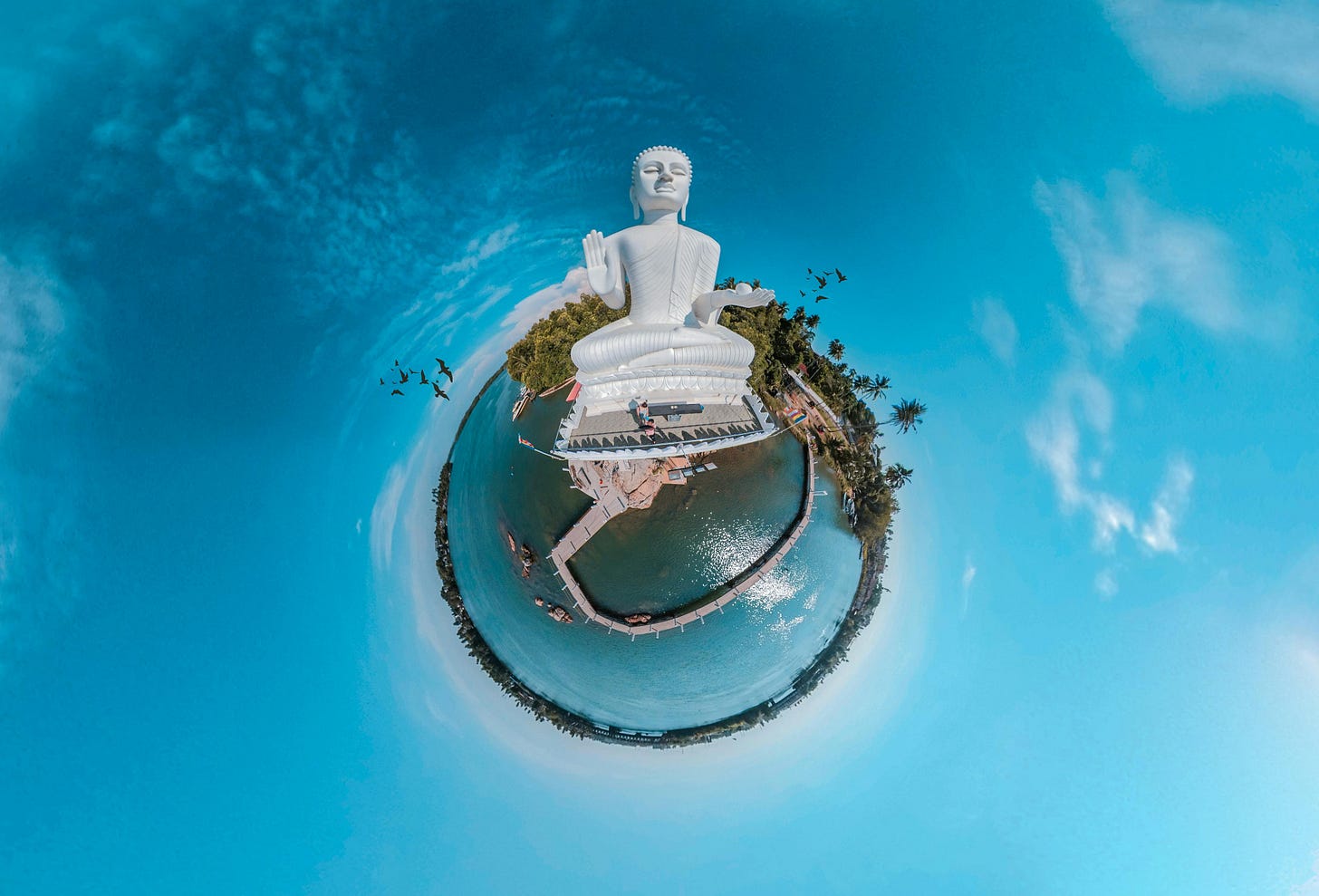Before I tell you about this radical act, a reminder that this Saturday we have a continuous nembutsu chanting session here at the temple between 11am and 3pm. Please join us in person, or online. Details on the temple calendar.
It’s traditional in Buddhism to take refuge in the three jewels: the Buddha, the Dharma and the Sangha.
We’ve added a fourth refuge.
Taking refuge in these three jewels unites Buddhists across the world, and has been done by generations of Buddhists for over two and half thousand years.
Adding a fourth might seem like a radical act.
It is a radical act.
It comes out of our collective years of spiritual practice. It makes perfect sense to us and feels vitally important.
What is the fourth refuge?
The Earth.

Why take refuge in the Earth?
Partly we are inspired by Rev. Gyomay Kubose who said, “Amida is life itself” and Rev. Master Daishin Morgan who wrote, “Reality is the true Avalokiteswara.”
Partly we are inspired by our own experiences of the Earth as a great teacher.
Partly we are inspired by knowing how important it is to be connected with the Earth in the midst of this time of lack of care.
Of course, life itself is greater than the Earth and includes the whole universe, past, present and future. Reality includes material reality and the way that we live our lives.
And yet as human beings the Earth is our great container. It sustains our lives in a very immediate way. It surrounds us. We are immediately and intimately connected with it, even as we lose awareness of that over and over again.
As the Buddha, Dharma and Sangha indicate enlightenment, the Earth also indicates enlightenment. As Dogen Zenji said: “Grasses and trees, fences and walls, tiles and pebbles all expound the dharma.”
The Buddha often instructed his monks to find a quiet place in the forest to meditate. To find the perfect tree to sit underneath.
If you have done this yourself you will know how powerful a practice this can be. You will know what a powerful teacher the earth itself is.
And now more than ever the Earth needs our care.
What does it mean to take refuge in something that needs our care? Surely we should be the ones being cared for when we take refuge?
Both have always been true.
To take refuge is to be a guest somewhere. As guests we are received and looked after, and we have a duty to be good guests.
The heart practice of monks and nuns in the Buddha’s time was taking refuge. And they also practiced taking care of the Buddha, Dharma and Sangha.
From the ultimate view point enlightenment itself is indestructible. From the conventional point of view the Buddha and his teachings needed protecting.
The Buddha was a real person that needed real care. Sometimes we was sick. Sometimes he was the subject of political plots. The actual words of the dharma needed protecting and preserving so they could be passed down to us today.
So we take refuge in the Earth, recognising that the Earth is a wise teacher, recognising that we are guests here and recognising that it is our duty to be good guests.
We’ll be adding the following form our words to our regular liturgy.
I take refuge in the Earth
The holy ground of awakening
Namo Bhūmyai
Thanks to the friends who are better scholars than us who helped us find the right words in Sanskrit.
Bhūmi means ground, soil etc.
I am told that the concept as Earth as a planet did not exist in the same way back then.
There are other words for Earth that are more associated with Earth goddesses than the earth itself and our feeling was that the Earth itself we wanted to recognise and honour rather than a specific personification.
Whether you join us for practice or not, I invite you to consider what taking refuge in the Earth might mean for you. And if you have some reflections do share them in the comments. We’d love to hear from you.





I always wanted to add a 4 th jewel, the earth! Going for refuge seems more complete with the Earth included♥️
What a lovely thought - wise and skilful to keep the Earth in mind as well.